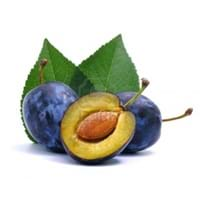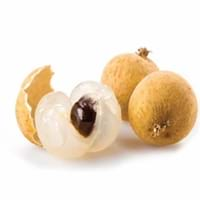Health Benefits
Cancer prevention, Cures gastro-intestinal troubles, Heart care, Increase in haemoglobin, Prevents high blood pressure
Anti depressant, Anti-inflammatory properties, Healthy mucus membrane, prevents oral cavity cancer, Prevents anemia, Prevents cases of morning sickness, Prevents lung cancer, Skin rejuvenation, Treatment of colonic diseases
General Benefits
Anti-inflammatory properties, Boosts immune system, Digestive aid, Eye care, Flu treatment, Helps in weight loss, Maintains healthy cholesterol level, Treatment of common cold
Anti oxidant properties, Anti-inflammatory properties, Digestive aid, Gives you energy, Suppresses Arthritis
Skin Benefits
Anti-aging benefits, Brightens and lightens complexion, Reduces wrinkles, Skin revitalization, Treatment of dark spots
Reduces wrinkles, Skin rejuvenation
Hair Benefits
Prevents hair loss, Promotes longer and healthier hair, Protects hair, Remedy for split ends, Treatment of dandruff
Not Available
Allergy Symptoms
Abdominal pains, Anaphylaxis, Vomiting
Itching, Swelling of mouth, tongue or lips, Tingling sensation in mouth
Side Effects
Allergic reaction
Mouth irritation, Weight gain
Best Time to Eat
As a snack in the late afternoon, Don't consume at night and before bed, Don't eat after meal, Morning time (before lunch)
As a snack in the late afternoon
Vitamin B5 (Pantothenic Acid)
Vitamin C (Ascorbic Acid)
Vitamin E (Tocopherole)
Not Available
Vitamin K (Phyllochinone)
Not Available
Lutein+Zeaxanthin
Not Available
Phytosterol
Not Available
Calories in Fresh Fruit with Peel
Calories in Fresh Fruit without Peel
Not Available
Not Available
Calories in Frozen Form
Not Available
Calories in Dried Form
Not Available
Calories in Canned Form
Not Available
Calories in Jam
Not Available
Type
Tree fruit
Tree fruit, Tropical
Season
Summer
Mid to late summer
Varieties
Merryweather Damson, Shropshire Prune, President plum, Damson farleigh and Damson langley bullace
Chompoo Longan, Kohala Seedling, Haew, Edau and Biew Kiew
Seedless Variety
No
Not Available
Color
Dark purple
Rusty brown
Inside Color
Yellow
Yellowish brown
Taste
Juicy, Sweet, Tart
Sweetish
Soil Type
Clay, Loam, Moist, Sandy loam, Well-drained
Well-drained
Climatic Conditions
Cold
Sunny, Warm, Without frosts
Facts about
- The name Damson originates from the original name 'Damacus plum'.
- Damson wine was very popular in 19th century.
- This fruit is often used in jams due to its slightly tart behaviour.
- Longan is also called as "Dragon's eye" in China as it gives an impression of an eyeball.
- Longan seeds can be used to absorb the venom after the snake bite and they also help to stop bleeding.
Top Producer
United Kingdom
Thailand
Other Countries
Ireland, United States of America
Australia, Combodia, Taiwan, United States of America, Vietnam
Top Importer
United States of America
China
Top Exporter
France
Thailand
Botanical Name
Prunus domestica subsp. insititia
Dimocarpus longan
Synonym
Not Available
Dragon eye
Subkingdom
Tracheobionta
Viridiplantae
Division
Magnoliophyta
Tracheophyta
Class
Magnoliopsida
Magnoliopsida
Family
Rosaceae
Sapindaceae
Species
Prunus domestica subsp. insititia
D. longan
Generic Group
Not Available
Not Available
Difference Between Damson and Longan
We might think that Damson and Longan are similar with respect to nutritional value and health benefits. But the nutrient content of both fruits is different. Damson and Longan Facts such as their taste, shape, color, and size are also distinct. The difference between Damson and Longan is explained here.
The amount of calories in 100 gm of fresh Damson and Longan with peel is 46.00 kcal and 83.00 kcal and the amount of calories without peel is Not Available and Not Available respectively. Thus, Damson and Longan belong to Low Calorie Fruits and Low Calorie Fruits category.These fruits might or might not differ with respect to their scientific classification. The order of Damson and Longan is Rosales and Sapindales respectively. Damson belongs to Rosaceae family and Longan belongs to Sapindaceae family. Damson belongs to Prunus genus of Prunus domestica subsp. insititia species and Longan belongs to Dimocarpus genus of D. longan species. Beings plants, both fruits belong to Plantae Kingdom.









